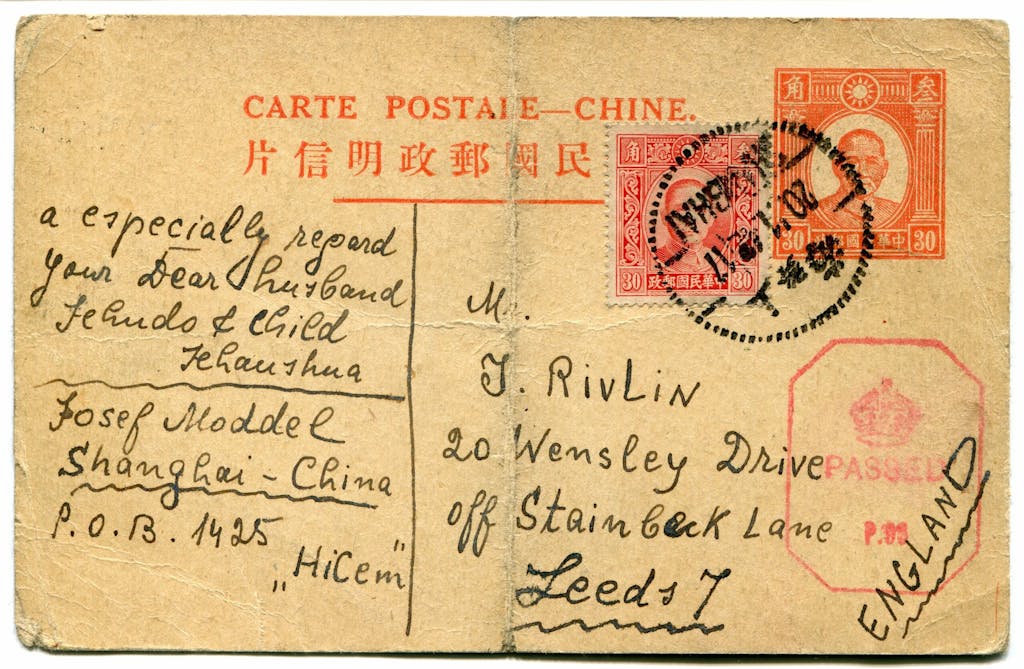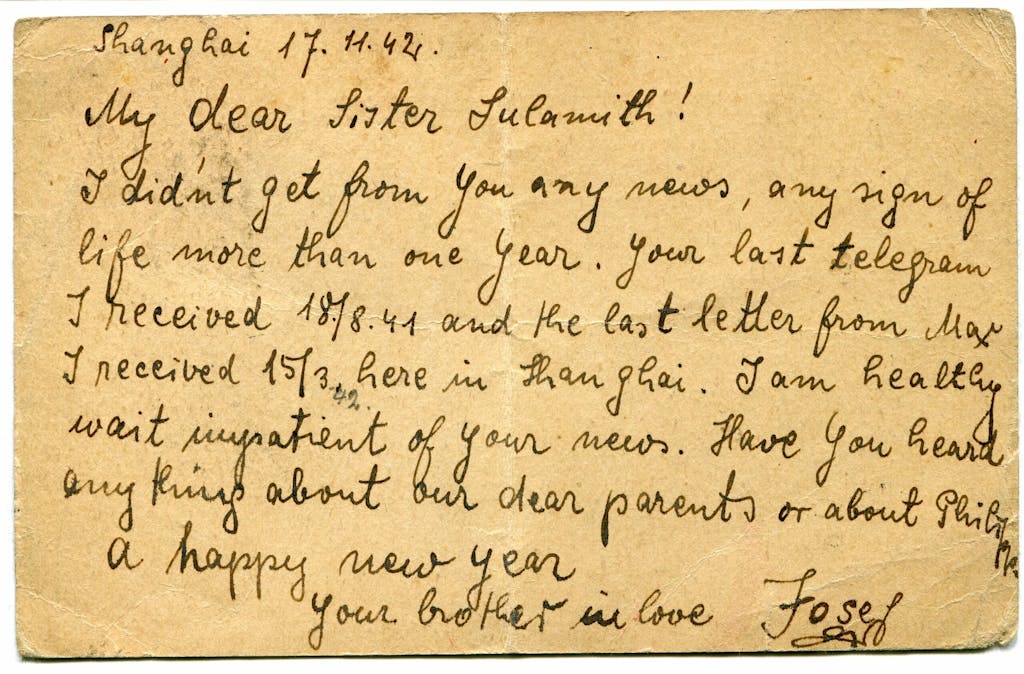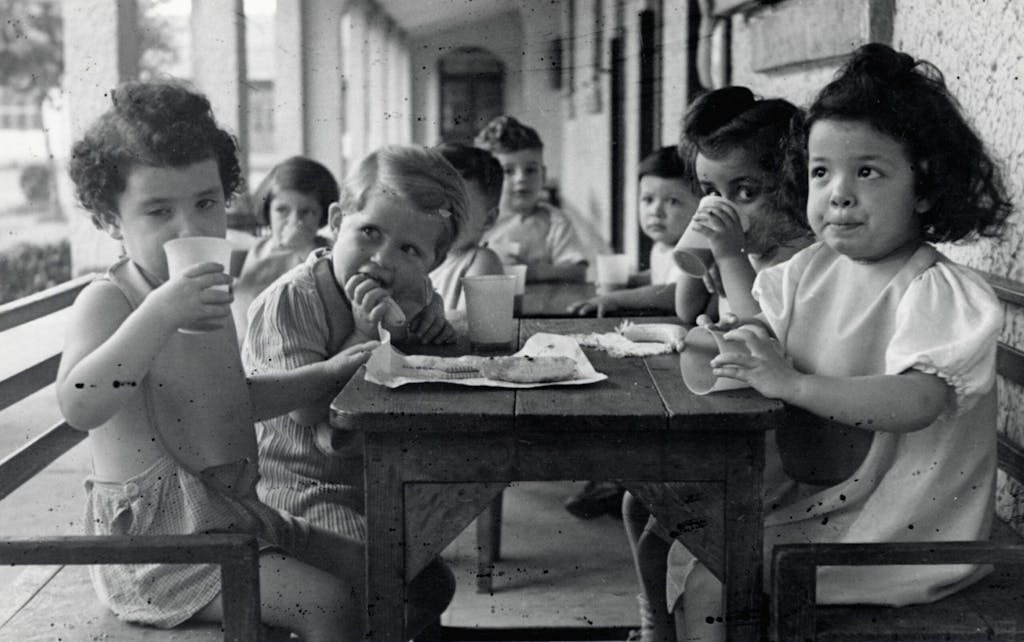As we welcome a new Year of the Tiger in the Chinese zodiac, we remember another significant Tiger year: 1938. This was when the Japanese occupied Shanghai and the city became the unlikely destination of European Jews seeking safety.
Following the Anschluss of Austria and the November 1938 pogroms against Jews called Kristallnacht, many German and Austrian Jewish refugees were looking to emigrate. Thanks to a temporary absence of full immigration controls, Shanghai offered a window of opportunity: between 1938 and 1941 about 18,000 to 20,000 Jews arrived by sea or overland via Russia. Among them were Liesel Carter’s uncle Julius and aunt Ilsa, and Danny Rivlin’s uncle Josef Moddel.


Certain diplomats in Europe were instrumental in helping Jews escape Nazi territory, including China’s consul-general in Vienna, Dr Ho Feng Shan. Acting against orders from his superiors, Dr Ho Feng Shan issued visas to all Jews who requested them from his consulate to ensure they could leave Austria.
Most families, such as Lotte Marcus’, had not considered China as a potential destination, but had exhausted other options. As Lotte explains in Harbor from the Holocaust, ‘Someone said “there’s a long line in front of the Chinese consulate, why don’t you go?”’ This sudden opportunity was unexpected. Another child refugee, Doris Fogel, recalls of her parents, ‘In their wildest dreams they never thought, “I’m going to Shanghai.”’

Shanghai in 1938
1930s Shanghai was a mosaic of nationalities and complex geopolitics, divided into Greater Shanghai, the French Concession, and the International Settlement. Ever since the city became an extraterritorial treaty port in the 1840s, Westerners arrived seeking business opportunities. Holocaust survivor Iby Knill remembers that her Uncle Bela, who had owned an Anglo-Chinese Paper & Pulp Company in Vienna went ‘with a cargo of goods to China and Shanghai and made a fortune.’
There were two established Jewish communities in Shanghai: about 6,000 anti-communist Russians who fled after the 1917 Russian Revolution, and 1,000 Indo-Iraqi Baghdadi Jews who arrived from the late 19th century onwards. The Baghdadi Jews were phenomenally successful, and the glamorous lifestyles and cultural activities of well-known families, such as the Sassoons, contributed to Shanghai’s allure as the “Paris of the East”. Sir Victor Sassoon epitomised this – he commissioned the city’s first skyscraper, the iconic, art-deco Cathay Hotel.

Refugee Reception
In stark contrast to the wealth of these established families, Jews arriving from 1938 to 1941 brought just one bag of clothes, few possessions and little money. Across Shanghai, there was tension surrounding the “Jewish question”. The British, American, French, and Jewish communities worried about maintenance, housing, and employment. Their anxieties were exacerbated by the simultaneous arrival of thousands of rural Chinese refugees, many of whom were escaping Japanese aerial bombing.
Many Baghdadi Jews supported the newly arrived European Jews. They provided food, found housing, and paid for the refugees’ daily necessities. Horace Kadoorie funded a new school, enabling Jewish children to gain an education as well as a sense of belonging and structure in their suddenly disrupted lives. During the war, the American Jewish Joint Distribution Committee became integral to ensuring the refugees received medical attention and one daily meal. Despite these efforts, the living conditions remained difficult and worsened after Pearl Harbour (December 1941). In February 1943, life in Shanghai became even more difficult as the Japanese occupiers forced all Jewish refugees into one square mile of Hongkou, aka the “Shanghai Ghetto”.

Community
Although Hongkou was extremely overcrowded, Helga Silberberg recalls, ‘the Chinese were very, very gracious to the immigrants…they accepted us’, and friendships were forged between Jewish and Chinese families. Hongkou resident Zhou Huizhen recalls, ‘whether you were Chinese or foreigner, we were all trying to survive.’
As the war continued, the Jewish community created a “Little Europe” and a sense of home through cultural activities (art clubs, orchestras) and shops (cafes, bakeries). As W Michael Blumenthal, who spent his teenage years in Shanghai, remembers, ‘the energy of the adversity ended up in some kind of creativity, even, and that helped the people to survive.’ For Michael and other young refugees, the years in Shanghai were formative. Although China wasn’t to become a permanent home – most left for the US, Palestine and elsewhere by 1949 – this generation considered themselves Shanghailanders in years to come.
Hari Jonkers (Archivist) 03/02/22
If your family or someone you know has Holocaust connections to China, we’d love to hear from you and find out more, email us at hcn@hud.ac.uk
Bibliography
A Altman & I Eber ‘Flight to Shanghai: 1938-1940 – The Larger Setting’
Harbour from the Holocaust 2020 [Film] Violet du Feng, dir. USA
Our work in preserving the past is of the utmost importance in the present. As well as providing support to our local community of survivors and refugees, we ensure that their testimony is fully integrated in high quality educational content. Our dedication to this cause costs money. Please consider supporting us by offering a donation.
